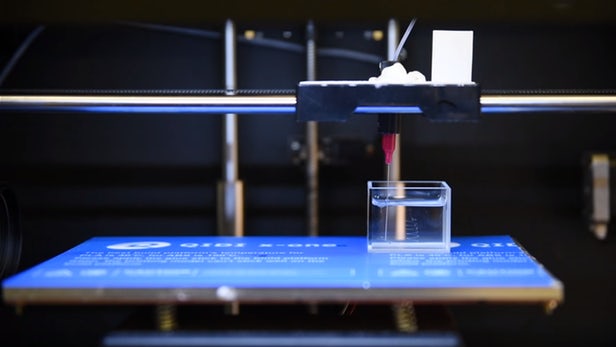
Breaking News
 Billionaire Businessman Reflects on 'Not Hard' Decision to Leave Crime-Ridden Chicago
Billionaire Businessman Reflects on 'Not Hard' Decision to Leave Crime-Ridden Chicago
 China's Mineral Power Play Will Succeed--Until It Doesn't
China's Mineral Power Play Will Succeed--Until It Doesn't
 Individualism and Self-Determination in the American Tradition
Individualism and Self-Determination in the American Tradition
 Gold's OMINOUS Warning: A Global Monetary Reset That'll BLINDSIDE Americans
Gold's OMINOUS Warning: A Global Monetary Reset That'll BLINDSIDE Americans
Top Tech News
 3D Printed Aluminum Alloy Sets Strength Record on Path to Lighter Aircraft Systems
3D Printed Aluminum Alloy Sets Strength Record on Path to Lighter Aircraft Systems
 Big Brother just got an upgrade.
Big Brother just got an upgrade.
SEMI-NEWS/SEMI-SATIRE: October 12, 2025 Edition
 Stem Cell Breakthrough for People with Parkinson's
Stem Cell Breakthrough for People with Parkinson's
 Linux Will Work For You. Time to Dump Windows 10. And Don't Bother with Windows 11
Linux Will Work For You. Time to Dump Windows 10. And Don't Bother with Windows 11
 XAI Using $18 Billion to Get 300,000 More Nvidia B200 Chips
XAI Using $18 Billion to Get 300,000 More Nvidia B200 Chips
 Immortal Monkeys? Not Quite, But Scientists Just Reversed Aging With 'Super' Stem Cells
Immortal Monkeys? Not Quite, But Scientists Just Reversed Aging With 'Super' Stem Cells
 ICE To Buy Tool That Tracks Locations Of Hundreds Of Millions Of Phones Every Day
ICE To Buy Tool That Tracks Locations Of Hundreds Of Millions Of Phones Every Day
 Yixiang 16kWh Battery For $1,920!? New Design!
Yixiang 16kWh Battery For $1,920!? New Design!
 Find a COMPATIBLE Linux Computer for $200+: Roadmap to Linux. Part 1
Find a COMPATIBLE Linux Computer for $200+: Roadmap to Linux. Part 1
Nanoscale "supersoap" allows liquid 3D structures to be printed within other liquids

Because of a special nanoscale coating, the water structures survive without breaking down into droplets even as the encapsulating fluid changes shape. This new form of 3D printing could give rise to flexible and stretchable liquid electronics, aid chemical synthesis, or serve as a transport and delivery system for nanoscale particles.
The team of researchers led by Tom Russell modified a standard 3D printer so it would inject narrow streams of water directly into a small container filled with silicon oil. The streams of water don't break down into droplets thanks to a special nanoscale surfactant – a substance that reduces surface tension – which separates the water from the surrounding liquid.
The surfactant, a "nanoparticle supersoap," simultaneously disperses gold nanoparticles into the water and binding polymers into the oil. After water is injected, the polymers attach to individual water molecules, forming a soap, vitrifying, and locking the water structures into place even as the surrounding oil changes shape.



